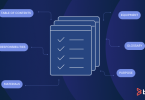IT systems are inherently complex beasts thanks to the very nature of modern technology which is a wobbling structure built upon the past’s unstable foundations. Inevitably, issues will arise and IT professionals will be called to action with the expectation that the problem will be remedied in a matter of moments. Regardless of how unrealistic these expectations may be, it remains the job of IT experts to do everything in their power to meet them.
One of the best ways to ensure issues are addressed as quickly and effectively as possible is by providing detailed instructions that guide IT professionals through some of the most commonly encountered difficulties. This is the purpose that runbooks aim to serve.
What is a Runbook?
Runbooks are compilations of standard procedures and best practices for dealing with various IT system tasks. Essentially step-by-step guides, runbooks provide detailed directions for tackling IT service jobs such as troubleshooting, diagnostics, and data management. They can take digital or physical form and are used as references for system administrators and operators to aid them in carrying out their duties.
Runbooks serve the vital function of being a reference and instructional booklet, guiding IT professionals through the prescribed steps to achieve their end goals. Runbooks are particularly useful for guiding users through common activities and troubleshooting steps that arise on a regular basis. As more issues become commonplace, more procedures are added to the runbook.
The trouble with most runbooks is that they are created to deal with immensely complex systems. As such, they are prone to becoming massive, complex beasts themselves as more operations become mandatory to upkeep and mediate the IT systems and their common maladies.
Further complicating the matter is the fact that runbooks can only be effective when they are kept up to date with the most recent procedures and methodologies. This requires a lot of communication and work from people with expertise in various IT disciplines to ensure that the runbooks are maintained properly with the most current information available.
Once again, we find ourselves in a quagmire where the inherent complexity of the system within which we work is necessitating that our solutions become just as complex. Anyone who has ever leafed through an encyclopedia looking for a specific piece of information has an idea of what manually searching through a runbook for the right procedure for the task at hand can be like. Luckily, there’s a better way of doing this and that’s through runbook automation.
What is Runbook Automation?
Runbook automation (RBA) is a tool that enables seamless updates of runbook documentation to ensure all of the information within adheres to the most current procedure and best practice standards. RBA also provides the capability of automatically serving the proper runbook and specific documentation that a user requires for the specific task at hand. This allows your IT ticketing system to automatically attach relevant guidance to the tickets received by IT professionals—increasing their response times and efficiency.
Runbook automation can be extended to provide a means for runbook tasks themselves to become automated. Leveraging automation in this way allows for tickets that were previously sent to IT professionals to become self-service operations instead. This frees up your IT experts to focus on jobs that are nuanced enough to require their direct attention while also giving them time to refine the automated processes themselves.
Runbook automation also improves communication throughout each department by integrating with alerting, ticketing, and communication tools. RBA tools also allow for detailed event tracking and automated alert systems to be put in place in conjunction with the runbooks. Runbook automated notification systems can alert system administrators of ongoing issues, making them aware of incidents in real-time so they can monitor the health of the system and act accordingly.
Monitoring the progress of RBA processes provides deep insights into areas needing improvement, such as current processes and procedures. This makes it much easier to improve the runbooks themselves while maintaining the loop of continuous improvement for IT systems so your organization can become more agile and efficient at a faster rate.
Runbook automation improves efficiency while also reducing opportunities for mistakes to occur by cutting down on the number of tasks that are taken on manually. Automating common tasks gives your IT experts time to focus on developing and improving procedures for tackling recurring issues.
It also makes it easier to find where processes can be improved by removing the human factor from these commonly performed operations. Improving the consistency of the application of runbook guidance through the use of automation makes it clear when the issue is due to the runbook itself and not to the operator’s execution on the guidance provided within it. Increasing discoverability of procedural inefficiencies makes the process of optimizing procedures faster and more effective.
The application of runbook automation reduces response time and mean time to recovery (MTTR) by providing the ability for some operations to be performed as a self-service operation. This reduces bottlenecks caused by bogging down IT professionals in work that shouldn’t require their direct attention. When service issues do require the direct input of a system operator, runbook automation ensures that the operator is equipped with the detailed information required to tackle the task at hand.
The IT sector is a complex world that seems to grow more complex with each passing day. This inherent complexity is compounded by the need for modern businesses to constantly increase their workflow efficiency while adapting to changes the moment they arise.
Keeping up with this dizzying state of affairs is made possible through the application of diligence, expertise, and ingenuity. Runbook automation provides the ability for users to leverage the refined processes created by IT professionals to perform self-service operations, freeing up experts for tackling more complex issues. When self-service isn’t an option, runbook automation ensures problems and their solutions are served simultaneously to the IT professionals working on the ticket so they can immediately begin addressing the issue with the tried and true procedures that have been refined for that specific task.
These postings are my own and do not necessarily represent BMC's position, strategies, or opinion.
See an error or have a suggestion? Please let us know by emailing [email protected].






